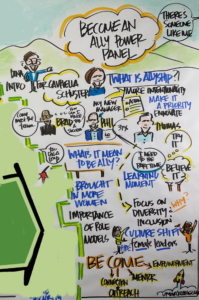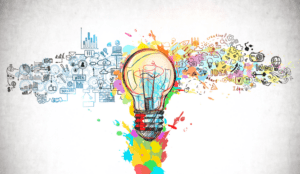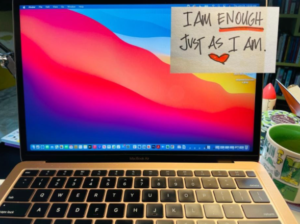
In a world where AI is becoming one of the most powerful tools, it’s easy to see how it can transform everyday tasks. From setting up your calendar and writing emails to editing podcasts and drafting blog posts, AI and machine learning can be a rocket ship for businesses looking to automate. But amidst all this technological innovation, you might wonder: If AI can do all this, what’s the point of me doing the thinking? The answer lies in harnessing your innate power—your imagination. Think of it as your own organic ChatGPT, ready to supercharge your creativity and problem-solving skills.
Quick Links to The Sections Below
The Power of Imagination: Your Innate AI
Imagination is one of the most powerful keys we possess as human beings. Unlike any app or algorithm, it’s hardwired into your brain, working to solve problems in ways that even the most sophisticated AI cannot. When you face a challenge, your imagination draws from your hippocampus (which stores your long-term memories) and your prefrontal cortex (responsible for complex thinking). Together, they work to mix, match, and remix possible solutions—kind of like how ChatGPT generates responses, but with a deeply personal touch.

Imagination vs. Automation: Why Both Matter
While AI can process massive amounts of data in seconds, imagination brings something irreplaceable to the table: the ability to see beyond the data. Your imagination can generate ideas that don’t just solve a problem—they transform it. When you become still and tap into your creative mind, it acts like a furnace of innovation, turning abstract thoughts into clear visions and building strategies to bring those visions to life.
For example, think about the creative process of designing a new product or planning a business pivot. AI can analyze trends and predict outcomes, but your imagination can envision what doesn’t yet exist, breaking through limits that AI cannot surpass.
How to Cultivate Your Organic ChatGPT
- Create a Thinking Space: Just as you need a quiet environment to focus on writing or brainstorming with AI tools, the power of your imagination thrives when given space. Take time to disconnect from your devices and allow yourself to daydream or journal freely.
- Engage in ‘What-If’ Scenarios: Ask yourself questions like, “What if I approached this problem from a completely different angle?” or “What if I had unlimited resources?” “What’s an idea that might get me fired?” These prompts can unlock new ideas that AI might overlook.
- Collaborate with AI: Think of AI as a partner rather than a replacement. Use it to handle repetitive tasks, freeing up your mental energy to imagine and innovate. For example, you might use an AI tool to draft a report, but your imagination will give it the unique flair that truly connects with your audience. It will take you into unknown territory, where the newer ideas live.
The Golden Combination: Imagination and AI
Ultimately, imagination and AI are not adversaries—they are collaborators. AI can streamline your processes and handle the heavy lifting, but your imagination is where the magic happens. It’s the secret sauce that turns good ideas into great ones and great ideas into groundbreaking innovations.
A Future Powered by Both
As AI continues to advance, the true differentiator will be the human ability to dream, imagine, and see beyond what is possible. By blending the logical strength of AI with the limitless potential of your imagination, you can create something truly extraordinary. So, before you dive into the next AI-powered tool, take a moment to tap into your inner ChatGPT—the one that’s been with you all along.
References
- Kahneman, D. (2011). Thinking, Fast and Slow. (Explores the processes of the mind, including how imagination plays a role in decision-making)
- Pink, D. H. (2006). A Whole New Mind: Why Right-Brainers Will Rule the Future. (Discusses the increasing value of creative thinking in a world where automation is prevalent)
- TED Talks like “The Power of Imagination” and “How to Harness Your Brain’s Potential” (These provide insights into the value of imagination and creativity in problem-solving)




